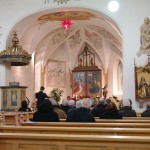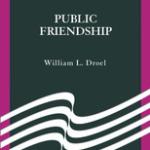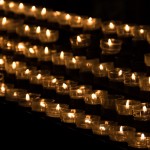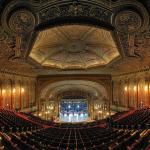The Working Catholic by Bill Droel
The bells are back.
Years ago and for years before that, the attention of worshipers at Mass drifted for understandable reasons: their ignorance of Latin and their partially obstructed view of the drama. Congregants often used their time at Mass for private prayer. Thus at key moments in the Mass, particularly at the consecration, altar servers would ring an assemblage of bells. The bells went quietly into a closet nearly 60 years ago. In recent months, however, several churches have dusted off the old Mass bells. Their purpose is similar as it was in the old days. Only today the distraction is individual use of mobile devices during what should be communal worship.
The Assyrian Church of the East has a Mass/Divine Liturgy ritual (Anaphora of Addai and Mari) without a consecration, also called “words of institution.” This ancient ritual, now used mostly in India, is in full communion with Roman Catholicism. How can this be? How can Jesus Christ be really present in what appears as bread and wine unless the formula of Jesus’ Last Supper is prayed over the bread and wine?
The current Mass ritual for Roman Catholics (the 1969/1970 Novus Ordo) is meant to pull all worshipers into “full and active participation” in this premier prayer. It is a single prayer, from the entrance procession to the dismissal procession. Christ is really present in a magnificent way throughout—beginning to end. Christ is present in the presider (the alter Christus). Christ is really present in the proclamation of God’s revealed Word, through the voice of the lectors. Christ is really present in the communion bread and the communion wine. Christ is really present in the congregation as they pray the Mass and as they head for the exit sign, acting as members of the Mystical Body of Christ.
Isn’t it possible that the truth of Christ really present in the entire Mass is conveyed as well in the Anaphora of Addai and Mari Rite (without an explicit consecration) as in the Latin Rite (with or without bells)? Still, is the Anaphora of Addai and Mari valid?
Most Catholics in the United States celebrate Mass in what is called the Latin Rite and most presume theirs (be it celebrated in Spanish, English or Polish) is the only Mass ritual. Yet in addition to the Latin Rite, Roman Catholicism has several other equally valid rites. For example, in October 2009 Pope Benedict XVI approved the Anglican Rite. Its Mass, celebrated here-and-there in Great Britain, the United States and India, varies only slightly from the Latin Rite. The ancient Byzantine Rite is widely used in the East, but also at a small number of designated parishes in the U.S. It has many differences from the Latin Rite. There is likewise the Maronite Rite used in Lebanon. There’s the Ge’ez Rite used in Ethiopia and also in Chicago’s Uptown neighborhood. All of these rites are equally valid within Roman Catholicism. So too are several more that are traced to the early days of Christianity.
Keep in mind too that the Mass or Divine Liturgy in all of the Eastern Orthodox churches is valid and licit; that Christ is truly and really present in their worship.
The Assyrian Church of the East (the Addai and Mari Rite), which belongs to the East Syriac Rite, is not Eastern Orthodox; it is a separate branch of Christianity. Its Mass, as mentioned, is quite different from a Latin Rite Mass. However, it is valid and licit; Christ is truly and really present in their worship. Since 2001 there has even been an official agreement allowing “mutual admission” of one another’s worshipers between Assyrian Church of the East and Roman Catholicism.
To make matters more complicated and more interesting, Roman Catholicism judges the Mass of several break-away denominations to be valid, though not licit. That is, Christ is really present in their Liturgy/Mass, even though their rites may differ from the common Latin Rite. By illicit, Roman Catholicism means disapproval of their independent governance status. The Polish National Catholic Church, headquartered in Scranton, is one example.
Suffice it to say that God is bigger than any one parish, bigger than any one formula for the Mass/Liturgy and certainly bigger than any two-minute segment of a liturgy.
Droel edits a print newsletter on faith and work, INITIATIVES (PO Box 291102, Chicago, IL 60629).











